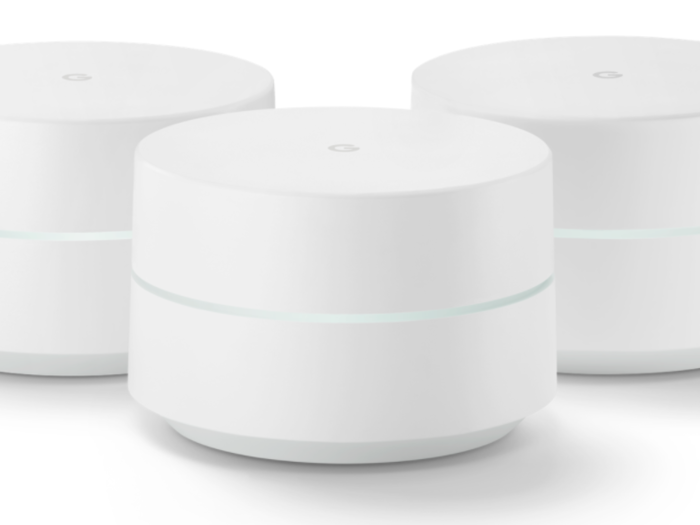Google's new WiFi routers are cheaper than other systems, but not as good
I got the 3-pack Google Wifi, which costs $299 and comes with three Google Wifi routers that you're meant to spread evenly throughout your home.

Each unit is designed to connect to each other to form a "mesh" network in your home, which covers your whole home in sweet, sweet WiFi. Mesh networks are much faster and more reliable than using traditional WiFi extenders, and they can switch the connection to different devices automatically, depending on the signal strength of your device.
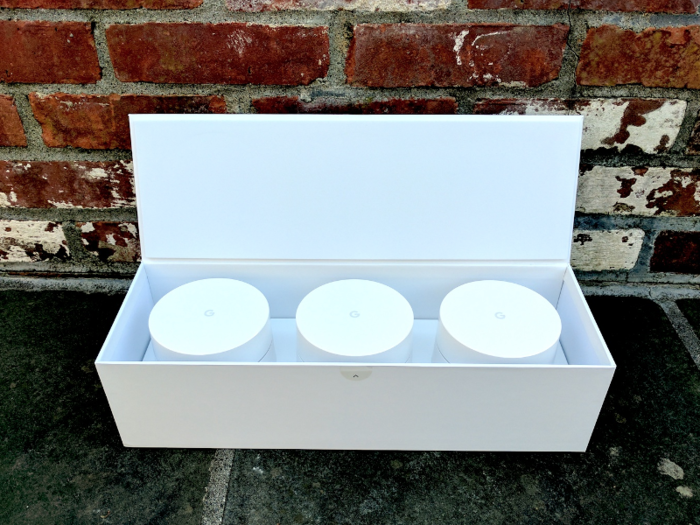
Since the Google Wifi units actually look good, and not like a tentacled robot, I didn't mind placing it somewhere where it's visible.
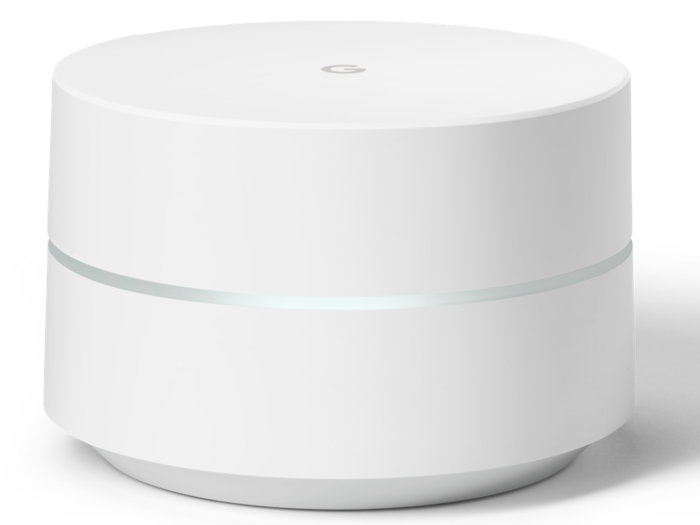
Google gave its router a sleek look so you wouldn't be inclined to hide it in a closet, where WiFi signals could get dampened.
The ports are sunken into the units themselves, so all you see is wires coming out of the unit instead of the connectors. It looks sleeker that way.
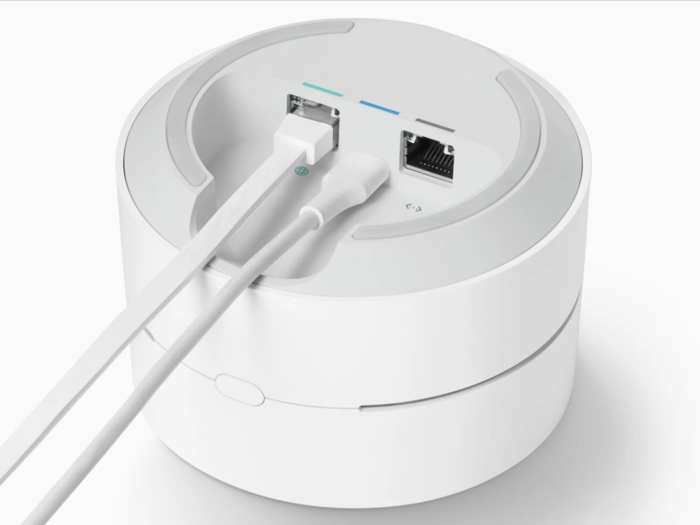
Setup is incredibly easy: You'll find a single card in the box with two easy steps. First, plug one of the Google Wifi routers to your modem and power, then download the Google Wifi app and follow the instructions.
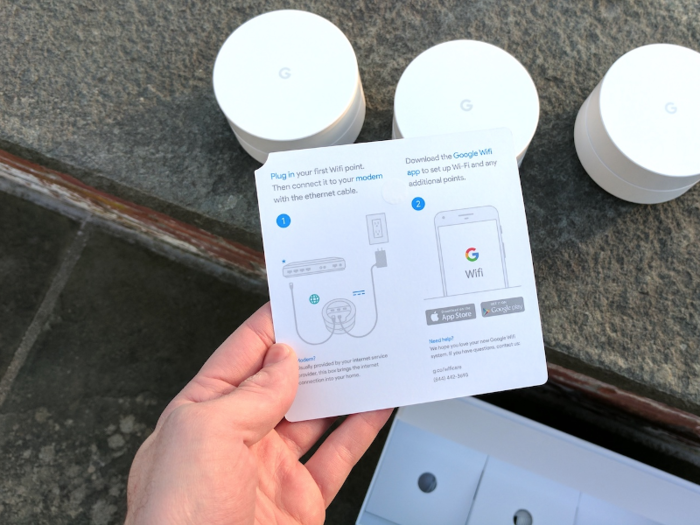
The app made it easy to set up Google Wifi. The only things I had to do were scan the QR code found beneath the primary unit, tell the app where the primary unit is in my house, and give my WiFi network a name and password.
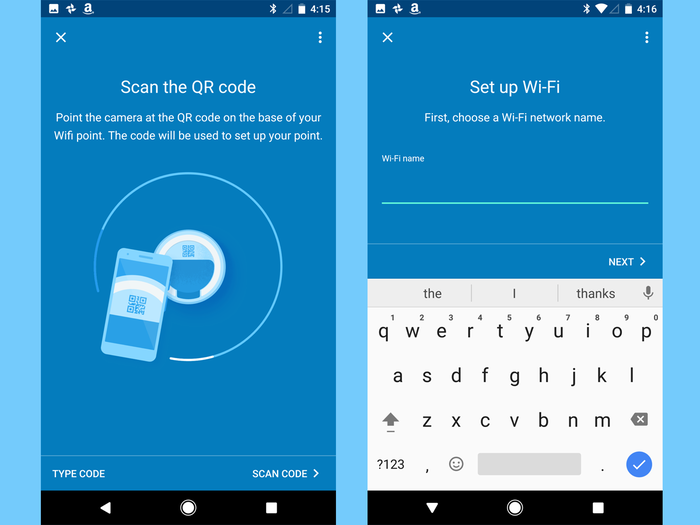
You're better off using your old WiFi network name and password. That way, any wireless device will reconnect to your Google Wifi network automatically.
From there, the app pretty much did everything else automatically.
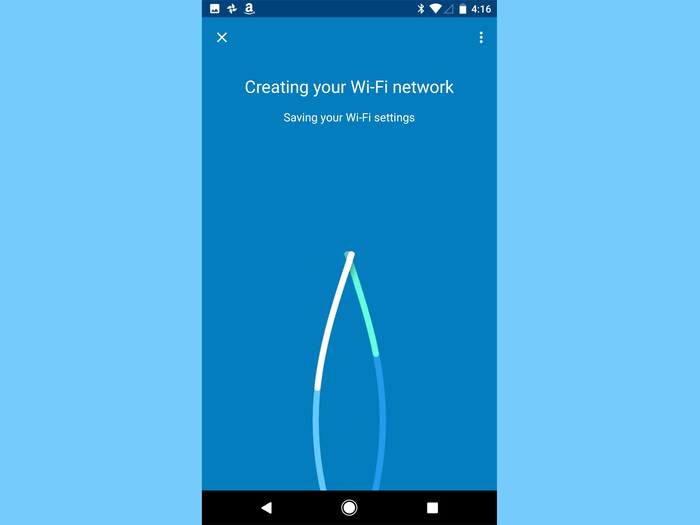
Then came the time to add a Google Wifi satellite unit upstairs so I could get a fast, strong WiFi signal upstairs. I simply had to tell the app that I wanted to connect another unit and continue following the instructions.
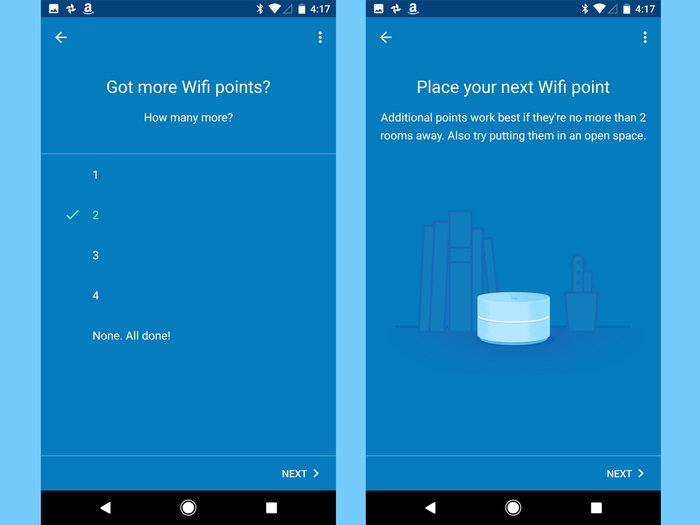
I plugged in the power for the second Google WiFi unit, tapped next, and let the app do its thing.
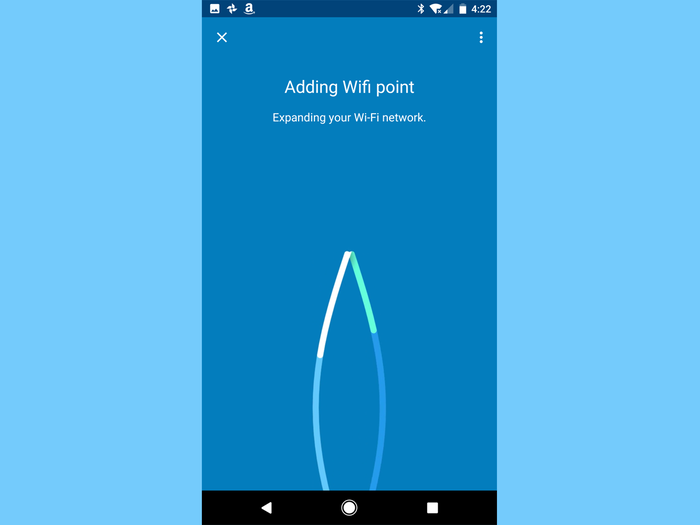
And just like that, my whole home was doused in WiFi. The whole process took just seven minutes and it was totally stress-free.
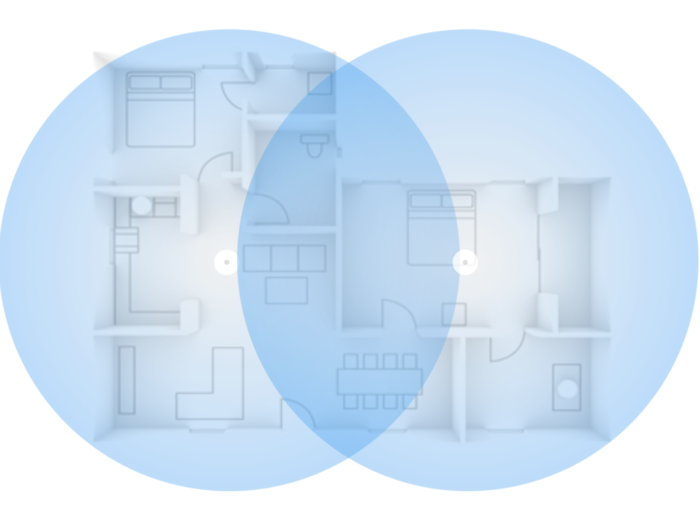
To make sure everything is working properly and well, Google added a useful Network Check feature that tests the internet speeds coming in and out of your primary unit, the connection between the units themselves, and the signal strength between your mobile device and the units.
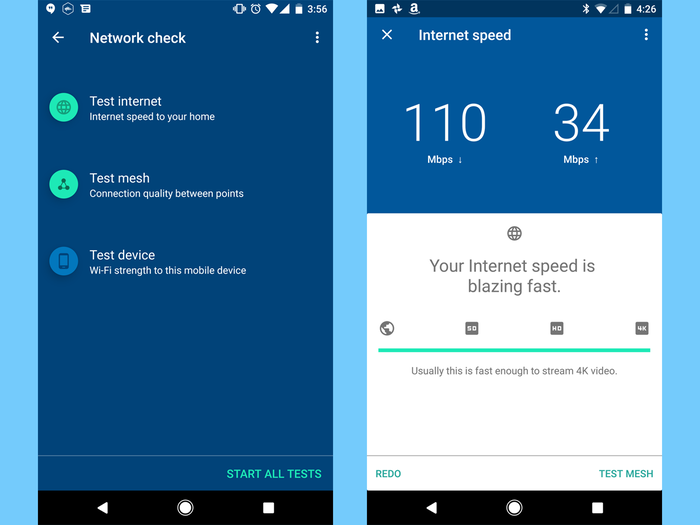
The app offers other useful features, too, like pausing the WiFi connection to certain devices, and making it easier for guests to connect.
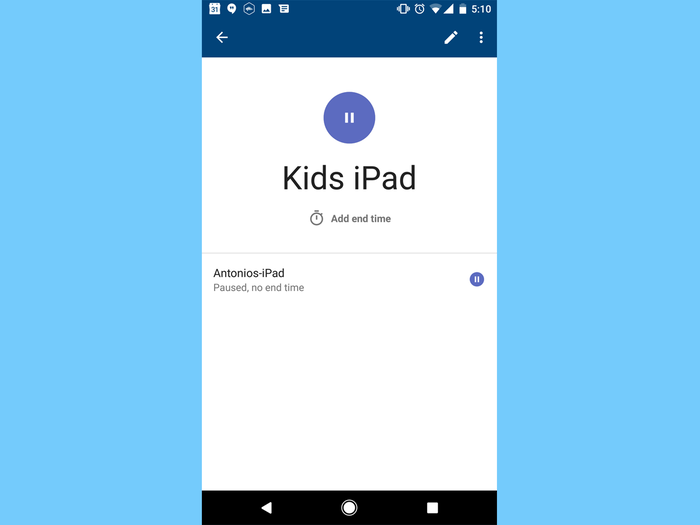
Now onto the performance. My advertised internet speed from my internet service provider is 100 Mbps download and 35 Mbps upload. The performance from the primary unit was excellent, but the satellite unit upstairs struggled to provide over 70 Mbps download.
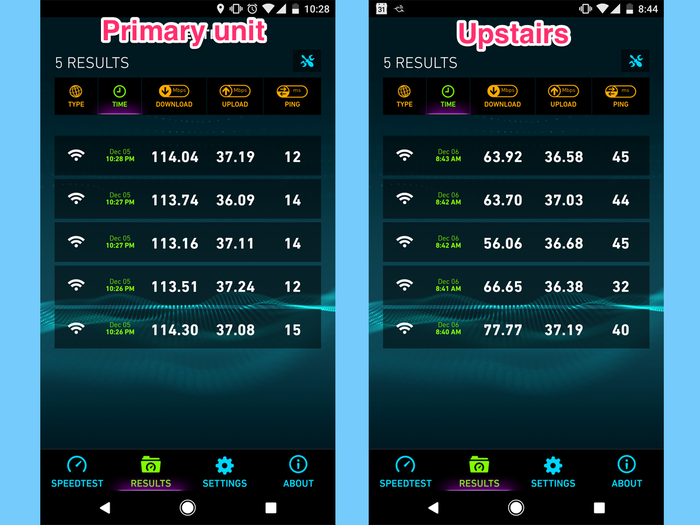
From my tests, the satellite Google Wifi unit upstairs didn't quite perform as well as expected, despite the fact that Google Wifi app said the mesh connection between the primary and upstairs units was "good."
Still, it delivered better speeds than a WiFi range extender would, and it was more than enough for browsing the web, prowling social media, and streaming Netflix upstairs. Google Wifi's mesh network also automatically switches the connection of my devices from the primary unit to the satellite unit upstairs seamlessly without interruption.
At the same time, Google Wifi might not suffice for those who plan to connect devices with more demanding needs to a satellite unit (the upstairs unit, in my case). Gamers, for example, won't like the slower ping speed of the satellite unit, as it could cause more lag time and delay during online multiplayer gameplay.
And if you plan to connect a device to Google Wifi's satellite units that will often be used for downloading larger files, like games, videos, bulk photos, and large apps, you might be disappointed that it won't deliver your full internet download speeds.
Later on, I decided to add the third Google WiFi satellite unit close to my TV setup, where I could connect my Tivo and Xbox One via the two Ethernet ports on the Google WiFi unit.

Two Google Wifi units was plenty to cover my home, and they could easily handle the 15 devices I have connected, including a smart home system, six home monitoring cameras, three computers, two phones, one tablet, a Tivo, and an Xbox One.
Yet, I thought I might as well relieve the mesh network of two devices, because why not? It's not like I'm carrying around my Tivo and Xbox around the house. Plus, removing a couple devices from my WiFi network can only help reduce interference.
Having only two Ethernet ports might not be enough for those with more than two wired devices. But you can easily fix that with an Ethernet switch to add more Ethernet ports, which you can get pretty cheaply from Amazon.
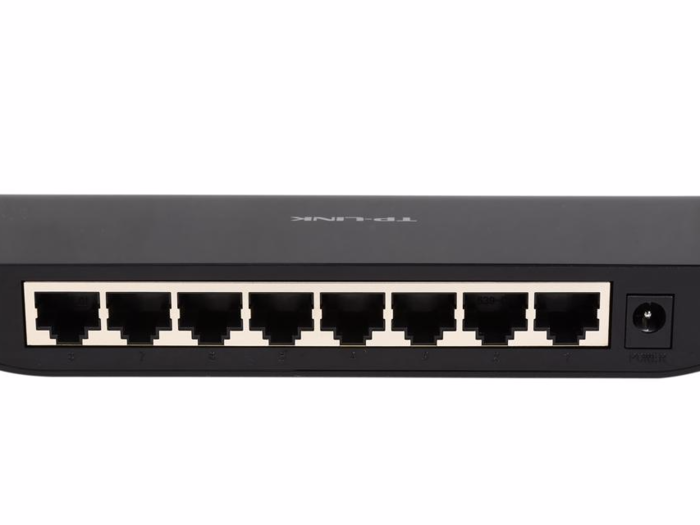
I'm currently using this $22 Ethernet switch from TP-Link and have had no issues with it so far.
If you only need one or two routers, you can get single Google Wifi units for $129 each.

A single Google Wifi unit is powerful enough for spaces up to 1,500 square feet. If your home is smaller than that, a single Google Wifi is certainly worthy of your consideration for its excellent performance, ease of setup, and the features and control the Google Wifi app provides.
Two units are rated to cover 3,000 square feet, and three units can cover 4,500 square feet.
There are other WiFi mesh systems with better performance, but Google Wifi is the cheapest by far.
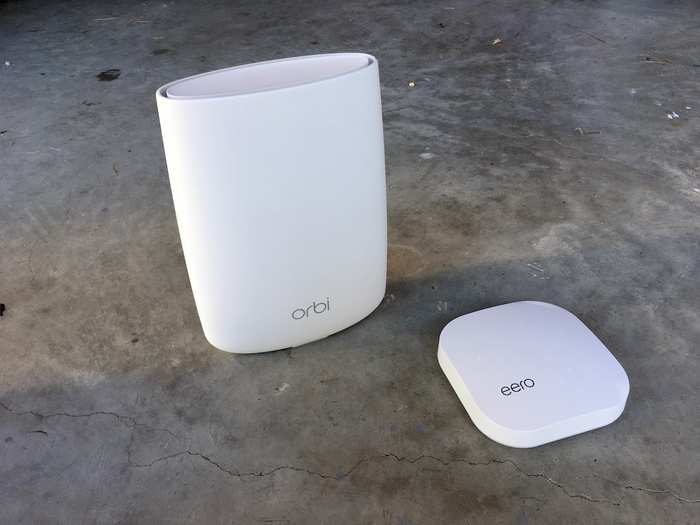
Eero and Orbi, two WiFi mesh systems very similar to Google Wifi, offered better performance from their satellite units. However, they're also much more expensive.
A single Eero costs $200, and a single Orbi unit costs $250 compared to a $120 single Google Wifi unit. Two single Google Wifi units and the three-pack are also cheaper than the equivalents from Eero and Orbi.
If you need to cover your home in good Wifi for basic needs, you'll be happy with Google Wifi's performance and its cheaper price tag.
Yet, if you have more demanding needs from satellite units, you're better off with Eero or Orbi.
Popular Right Now
Popular Keywords
- India’s wearables market decline
- Vivo V40 Pro vs OnePlus 12R
- Nothing Phone (2a) Plus vs OnePlus Nord 4
- Upcoming smartphones launching in August
- Nothing Phone (2a) review
- Current Location in Google
- Hide Whatsapp Messages
- Phone is hacked or not
- Whatsapp Deleted Messages
- Download photos from Whatsapp
- Instagram Messages
- How to lock facebook profile
- Android 14
- Unfollowed on Instagram
Advertisement
